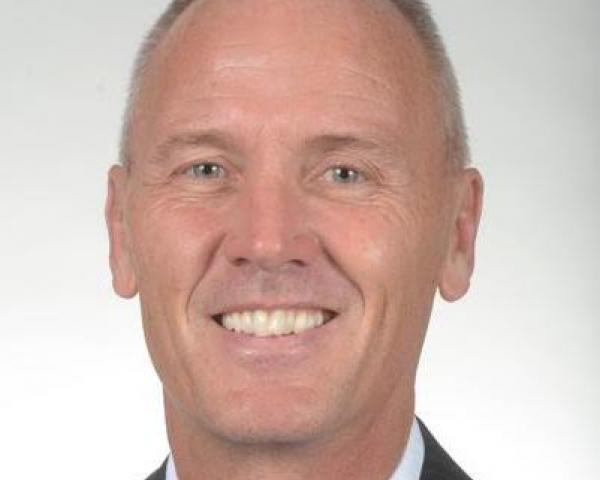|
Six Things Newsletter | July 21, 2020
In this week's Six Things newsletter, we explore the benefits of a devil's advocate, plus increased threats for manufacturers, the tipping point for claims automation, and more.

In this week's Six Things newsletter, we explore the benefits of a devil's advocate, plus increased threats for manufacturers, the tipping point for claims automation, and more.

|
Get Involved
Our authors are what set Insurance Thought Leadership apart.
|
Partner with us
We’d love to talk to you about how we can improve your marketing ROI.
|

Insurance Thought Leadership (ITL) delivers engaging, informative articles from our global network of thought leaders and decision makers. Their insights are transforming the insurance and risk management marketplace through knowledge sharing, big ideas on a wide variety of topics, and lessons learned through real-life applications of innovative technology.
We also connect our network of authors and readers in ways that help them uncover opportunities and that lead to innovation and strategic advantage.
The biggest difference between managers is in their attitude toward their duties. Each type is best-suited for a different type of team.

There have been multiple attempts to profile managers and make an ultimate classification. As an international company with 2,200-plus people on board, Itransition employs a range of managers of different levels of seniority, so we have created our own manager taxonomy.
From our point of view, the biggest difference between managers is in their attitude toward their duties. A management style is also often shaped by the person’s priorities: whether to focus more on task assignment or enforce strict adherence to job obligations and schedule. So we put these factors at the core of our classification to distinguish among four manager types.
Let’s explore how each of them approaches their responsibilities and builds relationships with the subordinate teams.
The Warden: good at discipline, weak at sustainable relationships
When we think about managers, many of us immediately imagine the Warden type. They are strict and don’t hesitate to raise their voice. Wardens make sure their workflows run like a Swiss watch and closely watch completion of every task, even the smallest ones. They stun people around them with their ability to keep everything under control and establish their management style on dominance and authoritarianism.
A Warden often hovers over employees and controls every step they take, ensuring team members clock in and out according to their schedule. Asking them for time off or a much-deserved holiday inspires awe and fear in the one who dares. There is an element of craziness to the whole character: Even being five minutes late can invoke serious penalties.
People who love their job and genuinely want to learn feel overly restricted by Wardens and tend to leave for other jobs where there is a laxer management style. People who prefer to obey without questioning and prioritize discipline more often than not get along with Wardens.
This type of management is well-suited in times of crisis or for businesses with low employee retention, where employees are paid by hours and don’t form long-term relationships with their employers. Wardens make good supervisors for drivers, cashiers and those in similar occupations.
The Counselor: careless about goal-setting and discipline
The Counselor type is the complete opposite of the Warden. They give off an aura of peace, tranquility and positive energy and prefer to be at the same level as their team, not above it. As long as everyone is happy, everything is peachy.
Counselors easily allow their subordinates to run personal errands in the middle of the day. They never torment their staff with questions about what they are doing, who gave them tasks and what the reasons were. A Counselor tends to be on friendly terms with each team member and is eager to spend time together with them even after hours.
Goal-setting is Counselors’ weakest point, so they rarely establish clear KPIs or a yearly plan. Instead, most of their energy goes into creating a welcoming atmosphere within the team.
This management style perfectly suits creative teams: artists, designers, musicians and such. Because they love what they do, they do not require overbearing guidance and micromanagement to complete the project. However, if engaged in the projects with specific time constraints, creative specialists do need managerial drive, motivation and guidance to steer them on the right course.
The Leader: good at task assignment, weak at discipline
Leaders are mostly concerned with properly assigned tasks and optimized business processes, and they stay unmoved when someone comes to work 30 minutes late. They interfere only to a degree that ensures KPIs are successfully met. A Leader can establish personal relationships with each team member yet only for the sake of enhancing efficiency.
Such managers can achieve amazing results with almost any team. They can organize the workflow to fit everyone’s schedule and agenda, assign tasks intelligently, follow through with their completion and resolve any complications before they turn into result-threatening problems.
The relationships between Leaders and their subordinates are based on mutual respect. What they care about most is results, and if a GP appointment or remote work once a week doesn’t get in the way of achieving them, Leaders are all for it. At the same time, arriving late to a meeting with a client or failing to meet deadlines is likely to undermine trust in the employee.
Appointing Leaders to teams with low staff retention or independence-seeking creative specialists will be just a waste of their potential. Instead, they should be designated for projects of special importance or performance-critical functions, like guiding a team of other managers.
The Good Manager: a cross between Wardens, Counselors and Leaders
As nothing in life is black and white, these manager types describe extremes rather than people in flesh and blood. A Good Manager, however, is a pretty feasible concept. This is a professional who knows when to put on a hat of a Leader, when to crack a Warden’s whip and when to bond with the team like a Counselor.
Good Managers stand out from the crowd and effectively lead teams of any size or expertise because of:
However, as practice shows, the ultimate quality of a Good Manager is the ability to make everyone happy. Some managers focus solely on the well-being of their team and are constantly trying to improve working and payment conditions. Others concentrate their efforts on making the board of directors content, ensuring that goals are achieved and profits are growing. The best managers, however, balance their efforts to equally cater to the needs of both groups.
We hope this article will give managers food for thought and inspire them to look at their management style from a new perspective. The article should also prove useful to business owners, providing guidance for finding managers they can trust with their enterprise and human resources.
Get Involved
Our authors are what set Insurance Thought Leadership apart.
|
Partner with us
We’d love to talk to you about how we can improve your marketing ROI.
|

Dmitry Azarov is chief marketing officer at Itransition, a software development company.
The future of insurance isn't incremental change: Technology is enabling direct threats to carriers, not just their partners and providers.

I recently wrote about the disruption the insurance industry faced in the late 1990s and early 2000s as the internet became an increasingly regular part of business. The theme of disruption in that period was one of changing how we did business. The main target was distribution via agents and brokers, which was wrongly predicted to go the way of the dodo.
While disruption has not stopped, it has changed dramatically from what it was back then.
As discussed in my new book, The Future of Insurance: From Disruption to Evolution, the current disruption the industry faces is not just about enabling technologies and new approaches to how insurance products and services are delivered.
While there have continued to be new approaches to the existing industry being created by tech-enabled startups, technology is enabling something else – direct threats to carriers themselves, not just their partners and providers.
There have always been new carriers starting up, either with their own capital or via the MGA model with backing from existing players. Historically, though, these startup carriers looked and felt like traditional carriers, but were just newer.
A New Breed of Startup Carrier
Today, while we still have these traditional startup carriers, we also have a new breed of carrier that is built from the ground up to be fully digital, often started by people from outside the insurance industry. These founders generally have tech backgrounds and are often engineers.
Engineers like to solve problems and figure out better ways of doing things.
That is exactly what these startups are born out of – a view of the insurance industry and desire to find a better way to protect people using the flexibility, intelligence and customer-experience-friendly digital tools that abound today.
This is a very different kind of threat to incumbent or legacy carriers.
See also: Insurance Disruption? Evolution Is Better
The Implicit Disruptive Threat
The disruptive threat these new carriers pose is not necessarily existential for legacy carriers. The chance that any existing P&C player will go out of business because of a startup carrier is extremely small. That is not quite what’s at stake.
Instead, the threat is that the startups will respond to customer demands in a way the industry has struggled to do and capture market share.
Increasingly, insurance buyers are demanding a more modern experience of their carriers because they’re getting this in most other aspects of their lives (both personally and professionally). Buyers get help with flight reservations from airlines via Twitter, text to pay municipal taxes, watch their packages get delivered to their home from far away, have their schedule automatically adjusted based on traffic and more.
Then a carrier needs a document faxed or mailed to it. Or sends the insured some communication in all caps because the company can’t produce varied-capitalization in communications, and ends up seeming to yell at customers while looking dated. Or requires you to go get your car inspected at some certified inspection facility after binding coverage, or get canceled.
Enter the startup carriers. They sell a policy in minutes (at most), employing AI, third-party data, self-service tools and more to make being a customer easy, if not delightful.
Disruption, Destruction or Evolution?
So what does the future look like in the face of rapidly changing customer expectations and a new generation of carriers that are free from many of the constraints you face?
The key is to take the disruptive players as an impetus to evolve.
What does that mean?
It means holding your core ability to manage capital, transfer risk and deliver insurance service in a way that gets people’s lives back together again after a loss.
What needs to change, though, is how we do that. The tools we use, our willingness to kill sacred cows that tend to be identified by the phrase, “…because we’ve always done it that way.”
See also: The 5 Charts on Insurance Disruption
There are many areas where we as an industry can embrace the new approaches identified by the disruptors. Embracing digital distribution with simpler, faster application processes. Using self-service tools like those that allow self-inspection of property for underwriting or loss adjusting. Relying on the flexibility and extensibility of the new cloud-based solutions on the scene, which can facilitate experimenting on new approaches to how you deliver insurance products and services.
There are many specific answers to how to evolve that will depend greatly on your particular situation. One overarching piece of advice is not to ignore or write off new players simply because they’re new or because their underwriting results may not be attractive (few new carriers ever do have enviable combined ratios as they lack the scale to smooth losses and spread expense loads).
Look at the tools they’re using and where in the process they’re focusing their efforts, then ask what you can do in that area (or beyond). Ask your customers directly, empower your staff to make change and focus on making meaningful change, not just on being good enough.
Get Involved
Our authors are what set Insurance Thought Leadership apart.
|
Partner with us
We’d love to talk to you about how we can improve your marketing ROI.
|

Bryan Falchuk is the founder and managing partner of Insurance Evolution Partners, an adviser and consultant to carriers and their partners in the insurance ecosystem.
Insurers need to use a devil's advocate to head off painful mistakes as they rethink their strategies in the face of the pandemic and economic crisis.

Over the weekend, two articles made a compelling case that we need to better vet academic studies before they become set in the public consciousness on controversial topics like possible systemic racism and the coronavirus. Both recommended a solution that has been a focus of my career -- devil's advocates -- and that we all should use as we formulate personal and corporate strategies in these turbulent times.
Let's spend a minute on why they're so important and how you can use them -- rather easily, in fact.
The article related to the coronavirus argues that a serious attempt at research wasn't vetted quickly enough and, when published in April, had obvious shortcomings that allowed many to believe that the virus wasn't as dangerous as it has turned out to be. The one concerning a paper on possible systemic racism by police went through peer review, but the authors say the process isn't designed to catch fraud and is vulnerable to rigging. In the case of the paper they discuss, a reader caught a major error shortly after publication, and the paper was withdrawn -- but not before many used it to dismiss the notion of racism in policing.
Both articles obviously touch on hot buttons, and the specifics of the arguments about the research they discuss could distract from the point I want to make, so I won't go into more detail. You can read the articles and reach your own conclusions. I'll just note that both say problems would have been avoided if the virus and racism research had been put in front of devil's advocates -- people whose task is solely to identify potentially bad assumptions, in time to do something about them.
That need for devil's advocates is a theme I've been sounding with corporate America for a dozen years and is especially important now. The New York Times and the Wall Street Journal ran articles recently saying that corporations are starting to believe both that the economic crisis caused by the pandemic will last longer than they had hoped and that the new normal will look quite different. So, a strategic rethink is happening all at once in a whole lot of C-suites, which creates opportunities both for progress and for mischief caused by bad assumptions -- that devil's advocates could head off.
My belief in the power of devil's advocates dates back to a book, "Billion Dollar Lessons," that Chunka Mui and I published in 2008, on the lessons to be learned from corporate failures. Out of the 750 major writeoffs that we spent two years investigating in detail, with the help of 20 researchers, we found that 46% stemmed from strategies that should have been identified ahead of time as brain-dead. Think Avon deciding that its main asset wasn't its door-to-door sales force but was its "culture of caring," which led the company to buy a medical equipment manufacturer and operator of retirement homes -- then quickly selling them at a loss because the cosmetics company had no idea what to do with them. Or, think Blue Circle Cement, one of the world's biggest cement companies, deciding that it was really a home products company and should make and sell lawn mowers, among many other things -- then filing for bankruptcy protection and being acquired.
We posited in the book that loads of people internally must have seen the problems coming but couldn't stop the strategies because of internal dynamics -- for instance, the CEO is often the one championing a new strategy, so the tendency is to want to confirm the idea, not to challenge it. Our subsequent research and consulting, as devil's advocates, has confirmed our thesis. (We're not alone, either. Much has been written in recent years about the value of a devil's advocate, sometimes referred to as a red team/blue team exercise.)
The key issue is: How do you identify problems in a way that's acceptable within the complex culture of a C-suite? How do you help the company win without making some powerful individual lose -- or see the devil's advocate process quashed if it looks like the CEO will be the loser?
The main answer is to turn the devil's advocate process into a bloodless exercise. You don't give the devil's advocate the power to rule on whether a strategy is right or even to hazard an opinion. The decision needs to stay with the CEO. You simply have the devil's advocate interview senior executives to probe for vulnerabilities, then use the concerns to identify the assumptions that have to be true for a strategy to succeed. Because the CEO has authorized the process, he or she can face the evidence and kill the strategy without losing face. If the decision is to proceed, the CEO will have a better idea about the pitfalls that may lie ahead.
Choosing a devil's advocate can be tricky. You can hire an outsider, who will bring objectivity but may take time to get up to speed. You can ask for a volunteer among senior insiders, but few want to be known as the naysayer, at least on more than a one-time basis. It seems to work best to designate an insider, so the whole team knows that the person is simply playing a role. (Irving Janis, in his pioneering 1982 book "Groupthink," described how President Kennedy designated his brother Bobby to be the devil's advocate after the administration had botched the Bay of Pigs invasion; Bobby then routinely challenged claims by military leaders during the Cuban missile crisis and may well have saved the world from nuclear war. Quite the endorsement for a designated devil's advocate....)
As insurers reformulate strategies to prepare for what could be an extended economic crisis and for a rather different world on the other side of it, they should build a devil's advocate into the process. Companies are making a lot of assumptions, many of which they don't even know they're making or made long enough ago that the assumptions have been forgotten. Some of those assumptions are wrong -- and many senior executives either know or suspect which ones should be challenged and rethought. (If I had to bet, the biggest mistake that companies in general will make in this go-'round is to underestimate what competitors are doing. The tendency is to see competitors as static, but they're working just as hard and perhaps as creatively in their strategy rooms as you are in yours.)
By the way, a devil's advocate approach can help you get better feedback on personal issues, just by having you rephrase questions. Don't ask a friend or family member if some plan of yours is a good idea. They'll know you want affirmation and give it to you. Instead, present a plan neutrally, say you're looking for holes in the idea and ask your friend or relative to help you identify the potential problems. Then, on your own, you can weigh those concerns against the benefits that you've already seen.
Knowing about pitfalls won't always matter. I consistently underestimate how long it will take me to write something, even though I allow for the fact that I always underestimate. But at least a devil's advocate process will open your eyes to many of the problems that lie in wait out there.
So, challenge those assumptions.
And stay safe.
Paul
P.S. Here are the six articles I'd like to highlight from the past week:
Why Traditional Insurance Won’t Work
With the sudden shift to remote-only interactions, insurers can no longer dictate the speed of their transformations.
Tipping Point for Claims Automation
While virtual estimating for auto claims—using photos in place of a physical inspection—is not new, the pandemic has made it the preferred method.
Time to Focus on Cyber Resilience
Here are five ways that businesses should be shoring up potential weak spots in their cyber security program’s incident response plan.
Increased Threats for Manufacturers
Manufacturers must understand that the digital push to run more efficiently creates a security gap that must be addressed.
Blockchain: Golden Opportunity in LatAm
Blockchain provides a golden opportunity for real, tangible operating efficiencies in Latin America and for transforming the region's image.
How to Recruit Claims Adjusters
One of the most promising solutions to recruiting and retaining workers lies with artificial intelligence—and not in the way that you might think.
Get Involved
Our authors are what set Insurance Thought Leadership apart.
|
Partner with us
We’d love to talk to you about how we can improve your marketing ROI.
|

Paul Carroll is the editor-in-chief of Insurance Thought Leadership.
He is also co-author of A Brief History of a Perfect Future: Inventing the Future We Can Proudly Leave Our Kids by 2050 and Billion Dollar Lessons: What You Can Learn From the Most Inexcusable Business Failures of the Last 25 Years and the author of a best-seller on IBM, published in 1993.
Carroll spent 17 years at the Wall Street Journal as an editor and reporter; he was nominated twice for the Pulitzer Prize. He later was a finalist for a National Magazine Award.
Here are five ways that businesses should be shoring up potential weak spots in their cyber security program’s incident response plan.

From a cyber security standpoint, the move back to a work setting for employees should not be the challenge that moving to “work from home” may have been for many organizations. Network security in the workspace is already in place, and employees are quite familiar and at ease working in the work environment.
By now, businesses should have already addressed issues of remote access, the use of multifactor authentication and virtual private networks (VPNs). But in the wake of COVID-19, as businesses return to the workplace, organizations should take some lessons from the COVID-19 pandemic. We recommend they use this information to shore up potential weak spots in their cyber security program’s incident response plan.
The greatest lesson to take away from the pandemic has to do with preparedness. What has been witnessed over the last three months is crisis response, on a global level, taken to its extreme. Every business and local, county and state government, and even individuals were forced into some form of crisis management. Some were able to respond better than others.
“Something like this will never happen”
One of the reasons that many were not prepared for the pandemic and did not respond well was because they believed that “something like this will never happen.” It’s a phrase that is heard often by those in the cyber security industry. Organizations often rationalize they are able to live with less than optimal cyber security because they feel they are too small to attract hackers, or they don’t have anything that anyone would want to steal. We know now that "something like this" can happen, and the results can be catastrophic.
Additionally, an organization does not have to possess something that a hacker wants to steal, to be a desirable target. All it has to possess is an opening; some vulnerability that allows a bad guy entry to exploit the opportunity to interrupt business and maybe even demand a ransom.
See also: How to Fight Rise in Cyber Criminals
Lessons from the COVID-19 pandemic
As businesses begin to return to workplace operations, now is a great time for them to reevaluate their approach to cyber security as a whole, and cyber resilience in particular, while drawing some comparisons to what the world has experienced in the pandemic.
1. Identify assets
Using the National Institute of Standards and Technology (NIST) Cyber Security Framework as a guide, consider the first risk category of IDENTIFY. The first objective of cyber security is for an organization to understand its assets. A business must ask itself, “What do we have that needs to be protected? What are our high-value/high-criticality assets? What are the risks and vulnerabilities associated with those assets? Where are those assets located? Are they on the cloud? On the premises? Do we have all of our assets accounted for in an inventory? Do we verify that inventory regularly?”
When the pandemic hit, many entities found themselves without a full understanding of the assets they possessed and what they still needed. Assets including hospital beds, ventilators, usable test kits and procedures and personal protective equipment. In many cases, the result was a scramble over a long period to acquire the necessary assets.
2. Protect assets
Following the NIST framework, once assets have been identified, and risks assessed and ranked for criticality, what protective controls are in place to protect those assets? In the towns, cities and states that we live in, there are healthcare systems, networks of healthcare providers, nursing homes, pharmacies and other components all geared to providing protection to our countries’ most valuable assets: people.
What about in the business community? Are businesses providing their most critical assets, such as data, hardware, software and even business processes, with the protections aligned with their importance? Do these businesses segment their critical assets or encrypt critical data? Do they educate their employees about cyber security and the roles they play in maintaining it? Do they provide their employees with the proper amount of access to IT assets?
3. Detect the problem
The third risk category in the NIST framework is DETECT. How can businesses know when something bad might be happening? How do businesses monitor for indicators of compromise within their networks? In the pandemic, the World Health Organization has been acting as a parallel to a managed security services provider (MSSP) or a security operations center (SOC) for the network of countries around the world. The job is to detect the initial outbreak and alert the rest of the world to the danger.
4. Respond to the crisis
Each business needs to assess its ability to detect potentially malicious activity in corporate networks. Is each organization engaging a third-party MSSP? Is it performing up to expectations? If a business is doing its own monitoring, is that monitoring complete and effective? Is the business monitoring the most valuable or risky assets closely enough? Is it processing all the right information? Does the business even know what malicious behavior looks like or how to find it?
5. Find a path to recovery
With these steps developed, businesses can finally consider what response and recovery will look like. NIST suggests considering how to handle response and recovery in our networks compared with how the various government agencies have handled theirs.
See also: 10 Tips for Moving Online in COVID World
First, businesses should have a documented incident response plan for their networks and should make sure it has been reviewed recently for adequacy. The incident response plan needs to clearly define roles and responsibilities for all participants. It needs to include procedures for identification, containment, eradication, recovery and lessons learned. The plan should also state how the business will communicate information about the incident to internal and external audiences. In developing the incident response plan, it is key for businesses to line up and perhaps even contract with third parties for technical response services that they don’t have in-house.
Businesses also should make sure their incident response plan is designed to consider a “black swan” event, which is an unexpected, catastrophic event that forces a complete shutdown of a company’s network and its services. As rare as black swan events may be, they do occur. Many remember the first outbreak of ransomware just a few years ago and how it caused the complete shutdown of some global networks. Even some companies with what might be considered very good cyber security were severely hurt. Why? Because they did not contemplate such an event and therefore did not build their response plan for effectiveness against a black swan event. The development of an incident response plan is not complete until it contemplates and prepares for such a rare and devastating event.
Finally, with respect to response and recovery, testing plans is incredibly important. Plans that are in place, but have not been tested for several years, are likely to be missing some details that will limit their usefulness when it really counts – in a cyber event. Businesses that test their plans regularly – minimally once per year – and update the plan based on lessons learned from both tests and actual events will have experiences in actual cyber events that are probably much less painful than if they did not plan and test the plan regularly.
The COVID-19 pandemic of 2020 is real – it’s not a test – and the lessons learned from the event are substantial and painful. The phrase “Never let a good crisis go to waste” has been repeated in a cynical manner many times, but it does have value in the context of current events. City, state and federal governments will certainly be revisiting their pandemic crisis management policies and procedures in the near term. It’s also a good time to revisit cyber risk management and incident response procedures.
Visit Zurich’s COVID-19 Resource Hub for more information.
Get Involved
Our authors are what set Insurance Thought Leadership apart.
|
Partner with us
We’d love to talk to you about how we can improve your marketing ROI.
|

Gerry Kane is vice president cyber risk engineering for Zurich North America. His primary responsibilities involve teaming with security and privacy underwriters to better evaluate cyber risk conditions of Zurich’s cybersecurity customers and prospects, primarily in the retail industry.
Here are five practical tips for teaching professionals in a virtual environment, in the COVID-19 era and beyond.

When it comes to education, there’s no such thing as one size fits all. That may seem obvious, because teaching spelling to a first grader is way different from teaching philosophy to a college student.
The nuances increase when we start talking about continuing education. Professionals who are years into their careers have practical goals; they’re seeking knowledge to help them advance in their companies or do their current jobs better. Many of them will earn CE (continuing education) credits by completing a course. To say that they have a lot at stake is an understatement. Their ultimate success depends greatly on the quality of the teaching.
So let’s talk about teaching industry professionals in a virtual environment, which has become necessary — even in vogue — in the era of COVID-19, and will likely increase in importance as the distributed workforce continues to grow.
Case in point: When the Network of Vertafore Users (NetVU) had to cancel its annual conference this year, staff restructured the entire course curriculum to an online format, and the “Summer of Accelerate” was born. It offers more than 100 courses, which are taken by thousands of independent insurance professionals tuning in from their dining rooms and home offices all over the country.
Based on our experience with our volunteer instructors, here are five tips for successful CE teaching in a virtual setting:
1. Move beyond the lesson plan
You have to prepare yourself differently to teach in a webinar format than in a classroom. Creating a good lesson plan will only get you so far. Yes, it’s always important to develop a solid outline of what you’re going to teach, but it’s also wise to consider that your students won’t be in the room with you. Instead, they’ll be at their computers and likely in their homes, where there are distractions. It may not be possible for them to raise their hand to ask a question or make a comment on the spur of the moment. The technology for virtual learning is good, but not that advanced yet. Which leads to our second tip.
See also: Building a Virtual Insurer Post-COVID
2. Make it practical
There’s no time for theory in a virtual setting. You have one hour to transmit a lot of information. That’s it. When you only have one shot at teaching the material, you don’t have the luxury of wading into the “whys” and “wherefores” of what you’re doing, like the college professor who gets to lecture a class once a week for a whole semester. Create snippets of information that are actionable and repeatable. Give step-by-step instructions, and create your PowerPoint slide or live demo accordingly, like a YouTube how-to video.
3. Adapt your materials to the technology
You probably won’t be able to interact with your students, and there won’t be that lively discussion you can get in a classroom setting. But you can still inject your presentation with personality and relevance. For example, a good way to lead in to a demonstration is, “I had a student just last week sharing with me that she was able to save 15 minutes a day using this technique.” Or, “I got a note from Sara Jones this morning saying she hoped we would dive a little deeper into this topic.”
4. Recognize the objectives
The sooner CE instructors understand a fundamental difference from teaching in an academic environment, the better off everyone will be. In grade school, high school, college and graduate school, the school sets the objectives. By contrast, the desired outcome of continuing education is improved performance, so the student sets the objectives. They are driven by the student’s career aspirations and the firm’s pursuit of happier customers and financial targets. This is true regardless of the classroom setting — at a distance or in person.
5. Understand your students
Because your students drive the curriculum, it’s important to ask them in advance why they’ve chosen your session, as well as their expectations for the session and even career goals. A short survey will open up a world of insight. Remember, you will be imparting practical knowledge, not abstract theory. In our member organization of more than 20,000 insurance agencies, carriers, MGAs and compliance organizations, our “students” usually want to know more about a specific feature of their firm’s Vertafore management system and how to use it more effectively.
For example, numerous times a day a customer service representative, or CSR, needs to engage in a conversation with an insured about that person’s needs while working in the ACORD application. The CSR has to listen, answer questions, give advice, even empathize with the customer while simultaneously looking at a screen full of questions, digesting the information and completing a number of fields. That's a skill that has to be taught and practiced.
Rewind and Review
Before I begin those five steps of creating a successful CE course, I like to take a minute and go back to where it all starts: the customer. Remember, the customer doesn’t choose an agency because its CSR is an expert in the technology, but because he’s qualified to give sound advice.
The tool or technology can never become more important than the conversation with the customer.
Get Involved
Our authors are what set Insurance Thought Leadership apart.
|
Partner with us
We’d love to talk to you about how we can improve your marketing ROI.
|
One of the most promising solutions to recruiting and retaining workers lies with artificial intelligence—and not in the way that you might think.

If you look at a list of preferred jobs of college graduates, “claims adjuster” might not make the list. Insurance claims operations likely seem foreign to a 21- or 22-year old who probably has never had to file a claim. There is limited understanding about what is involved or why. One doesn’t hear much about claims adjusters on the news or on YouTube; the profession is all sort of a mystery. Because of this, claims operations tend to be jobs people “happen upon.”
In the past, the insurance industry has not needed to recruit aggressively, but this is about to change. The average claims adjuster stays in the industry for only four years. Another swath of adjusters soon will retire. Employee turnover coupled with an aging out of other workers will create problems that can cripple organizations. Attracting new talent to the field while retaining a larger percentage of experienced workers is critical.
Gaps
There are two gaps that have to be addressed to preserve the health of claims adjusters: the mindset gap and the knowledge gap. The mindset gap pertains to negative perceptions of the field and its related responsibilities as well as to how workers approach their jobs. The primary generations of workers entering claims operations, millennials and Gen Zers, typically don’t plan to stay with the same company in the same position for long. Career aspirations are different than for previous generations ruling claims operations. According to Gallup, only half of millennials plan to be in their same job a year from now, and just 29% feel invested in their work. High millennial turnover costs the U.S. approximately $30.5 billion annually. The numbers don’t look much better for Gen Z — and, in a profession like claims, this paints an even bleaker picture.
The claims field already has strikes against it that other jobs don’t have. If droves of millennials are leaving positions because they are not engaged or emotionally invested, a general perception that claims is a data entry job becomes highly problematic. Piling on, claims representatives traditionally have been viewed as adversaries to claimants, with claims adjusters not trusting the people they are charged with helping. This hardly evokes the warm, fuzzy feeling workers want to experience with their respective jobs, likely hastening a quick exit from the profession.
Compounding the problem, it takes claims adjusters years to accumulate the knowledge needed to be effective. Experienced claims adjusters understand countless factors and nuances that come into play in a claim, creating a sizeable knowledge gap between new and veteran claims adjusters. If employees walk out the door before accumulating this knowledge, that is a huge loss on the investment spent on training without ever reaping the benefits. Similarly, there are significant issues as adjusters retire, taking a career’s worth of knowledge and experience with them before well-trained workers are in place.
See also: Future Is Already Here in Claims
AI: The Secret Weapon in the Battle to Recruit and Retain Talent
One of the most promising solutions to recruiting and retaining workers lies with artificial intelligence — and not in the way that you might think. I am not talking about the solutions that identify potential workers and send them an email. I mean applying AI to attack the actual gaps in mindset and in knowledge.
First, mindset. AI-driven solutions are being implemented across insurance organizations that can provide far richer information about claims while eliminating rote tasks. AI enables claims team members to dive deeper into a claim and instantly discover new information that is meaningful to their decision-making process. With the latest in data science (an attractive term to would-be applicants seeking cutting-edge jobs), AI-based solutions prompt adjusters to use data and apply their own brain to solve increasingly complex challenges.
Additionally, AI helps root out fraud, removing from claims representatives’ minds the fear that someone is trying to run a scam and helping to shift the adjuster’s role from adversary to advocate. Within this new paradigm, it becomes possible to scale compassion so that representatives can truly serve people in a highly efficient manner. This concept, one of scalable compassion, also creates a shift in how claims themselves are viewed. Instead of seeing a hassle or a mountain of red tape to fight through, claimants view their claims as actual benefits and treat representatives with greater respect. These factors combine to make a much more inviting environment for new recruits while assisting in the retention of the current workforce.
In terms of the knowledge gap, because AI adds intelligence to the claims process, the learning curve for newer representatives can be reduced dramatically. AI gets all workers to a competent level almost immediately. It’s an equalizer of sorts. While experience will always be an asset, the knowledge gap essentially disappears when a smart system that tells representatives what they need to know when they need to know it is in place.
See also: The Case for Paying COVID BII Claims
Fortifying the Industry
Because the nature of the claims representative position changes — from adversary to advocate, from heavy on data entry to full of opportunities for insightful decision-making, from a high barrier of entry to hitting the ground running — there is greater appeal and room for growth.
Additionally, in the current environment, the majority of the workforce is being asked to work from home. This has been a difficult transition for businesses across a range of industries. Insurance has been surprisingly adept, however, with many claims adjusters already working remotely. This practice will continue after COVID-19 passes, which can be a perk for many millennials and Gen Zers who don’t want to commute to an office every morning and who value flexibility.
With a little innovation, a more adaptable approach and proper application of AI-based technology, the claims industry can transform what it means to be an adjuster; attract new, talented workers to organizations; and provide them with long, fulfilling careers — all while averting a hiring crisis.
Without such change, I predict the claims process as we know it will unravel within a decade.
The next step is clear. Will you take it?
Get Involved
Our authors are what set Insurance Thought Leadership apart.
|
Partner with us
We’d love to talk to you about how we can improve your marketing ROI.
|

Thomas Ash is a former senior vice president at CLARA analytics, the leading provider of artificial intelligence (AI) technology in the commercial insurance industry.
While virtual estimating for auto claims—using photos in place of a physical inspection—is not new, the pandemic has made it the preferred method.

This year, we have witnessed explosive growth in technology adoption. Zoom video conferencing has risen 574%, Instacart grocery delivery has jumped 450% and Google Classroom usage has increased 580%—all due to COVID-19. The pandemic has truly altered how we think about and use technology. For businesses, it has introduced opportunities for digital transformation. Case in point: the automotive insurance industry.
While some may say insurers are slower to embrace change, the sector has moved at lightning speed to maintain business continuity since the start of COVID-19. The first step was what seemed like an overnight transition to a fully remote workforce. After setting up the required technology to support their employees, carriers then shifted focus to refining the digital solutions that would allow them to better manage the claims process and serve their customers virtually.
Automotive insurers have long relied on staff appraisers and collision repairers to assess vehicle damage after an accident. While virtual estimating—or using photos in place of a physical inspection—is not new, the pandemic has made it the preferred method of inspection.
Prior to COVID-19, use of virtual estimating was limited and focused almost exclusively on low-severity claims. This was due, in part, to concerns about the ability to produce an accurate estimate. In fact, when compared with other methods of inspection, virtual estimating accounted for just 2% of all estimates written in the United States and Canada just a year ago.
However, with an increase in our need to socially distance and a decrease in miles driven, the conditions were right for widespread adoption of claims virtualization. In just the first two months of the pandemic, virtual estimating usage jumped to 13%—all while growth in other methods of inspection has decreased or remained stagnant. In addition, some carriers announced early in the outbreak that they were moving almost all of their claims handling to a virtual model, and dozens more reached out to Mitchell to get started. Collision repair shops have also followed suit, providing customers with new tools for collecting and submitting damage photos.
See also: Future of Claims: Automation, Empathy
For insurers, the benefits of virtual estimating include increased efficiency and customer satisfaction. Field appraisers typically complete three to four estimates a day when factoring in administrative tasks and drive time. However, with virtual estimating, that number increases to 15 to 20. By eliminating travel and tasks like appointment setting, employees can focus their efforts on the actual appraisal. Consumers, on the other hand, benefit from the speed, ease and convenience that comes from a digital self-service solution—at a time when technology adoption has never been higher.
So what impact does this have on claims automation? The first step toward automating the claims workflow was increasing insurers’ comfort level with using photos, instead of a physical inspection, to assess vehicle damage. With COVID-19 accelerating their adoption of virtual or photo-based estimating, we have now reached a tipping point. Insurers have validated the feasibility of using photos in the estimating process. They have seen virtual estimating used successfully for both low- and high-severity claims. And they can no longer dispute the efficiency gains and consumer benefits it provides. These factors combined may make them willing, and ready, to begin automating the complex, labor-intensive claims process.
The natural next step is to use artificial intelligence (AI) to further streamline and improve estimating. With the photos—and eventually videos—submitted digitally, insurers can rely on an AI engine to identify component-level vehicle damage. From there, the data can be combined with other inputs to return a recommendation of either repair or replace. If repairable, the computer can then populate individual estimate lines with recommended parts and labor costs. Once the data is submitted, carriers can even incorporate automation in the auditing process. Instead of reviewing just a handful of estimates each day, auditors can let the computer review all of the estimates submitted. This will allow them to focus their energy on the claims that need attention. It will also give them the opportunity to rapidly uncover and address any issues.
Leveraging automation in the claims process has many benefits, as noted by McKinsey. First, it improves accuracy. Next, it increases efficiency, reducing expenses by 25% to 30%. Finally, it raises customer satisfaction by as much as 20%.
See also: Keys to ‘Intelligent Automation’
Over the last three months, insurers have taken an incremental step—or leap—closer to claims automation. However, the transition from virtual estimating to touchless claims will not happen overnight. It is an evolution that will require us to re-think how and where we use technology versus how and where humans apply their expertise. In the end, though, automating more of the claims process will allow us to better serve consumers and support the proper, safe repair of their vehicles.
Get Involved
Our authors are what set Insurance Thought Leadership apart.
|
Partner with us
We’d love to talk to you about how we can improve your marketing ROI.
|

Olivier Baudoux is senior vice president of global product strategy and artificial intelligence for Mitchell’s Auto Physical Damage division. He is a highly regarded technical leader and expert in artificial intelligence and automation.
Incorporating translation and localization services into the planning is essential to ensuring an appropriate and robust response.

Disasters come in all shapes and sizes and are indiscriminate in those they catch up in their chaos. As such, when it comes to disaster planning, it’s essential to account for linguistic diversity. Incorporating translation and localization services into the planning process is therefore an essential part of ensuring an appropriate and robust response.
In this post, we’ll take a look at disaster planning from a linguistic inclusivity perspective. We’ll also consider the value of translation services in responding to disasters, from mitigating the impact of climate change-related disasters to health crises. Let’s get to work!
We live in a globalized world, with people moving from one country to another for economic, personal and political reasons. Furthermore, many countries are home to a rich variety of indigenous languages. This global linguistic diversity means that monolingual disaster planning is risky in many circumstances and locations.
Using translation and localization as part of disaster planning
Using translation in disaster planning is a dual-pronged process. Not only do the disaster planning documents themselves need to be in multiple languages, but plans need to be in place to ensure that the response to the disaster is delivered in multiple languages, as well.
Localization needs to be considered, too. It's not enough to translate words from one language to another. Translated documents need to be shaped so they better connect with the target audience.
When creating disaster plans and strategies, it is important to use translation and localization services to ensure that all the communities that are likely to be affected by the disaster are cared for as part of the response planning. The translation element of the process will ensure that the disaster planning documents are available in all the languages that will be needed. Localization, meanwhile, can ensure that the plans take account of factors such as how to connect with different communities in an emergency.
Localization in action
A recent example is how information has been shared with remote Amazon communities about COVID-19. Local interpreters have been used to share information over the radio in local languages, as many of the communities in question do not have access to the internet.
While every person who works on a disaster response strategy hopes that their work will never be used, they need to plan how it will be. That means having translation and interpretation resources lined up and ready to spring into action.
The value of translation services in disaster planning
When a disaster strikes and panic ensues, those who don’t speak the primary language of the area are often more likely to suffer because they receive information second-hand. This not only introduces delays at a time when action could be crucial but also builds in the potential for misinformation to spread.
See also: Value of Optimized Resource Planning
That’s why it is so important to use professional translators and interpreters as part of a coordinated disaster response. They need the right skillsets, too: Experienced medical translation professionals are needed in this pandemic, for instance, to deliver technical information packed with medical details and not worry about any of it being lost in translation.
Disaster planning can be tough. There are so many unknowns to account for. Building multiple languages into that process certainly doesn’t make it any easier, but it does mean that the disaster response can be applied in a way that helps as many people as possible, regardless of their native tongues.
Get Involved
Our authors are what set Insurance Thought Leadership apart.
|
Partner with us
We’d love to talk to you about how we can improve your marketing ROI.
|

Louise Taylor is a writer with a long-term fascination with languages and the way that they are used. She writes regularly on topics relating to translation, interpretation and languages from around the globe.
Blockchain provides a golden opportunity for real, tangible operating efficiencies in Latin America and for transforming the region's image.

Blockchain technology’s potential for disrupting the re/insurance industry is frequently mentioned, and it's easy to understand why, given the nature and volume of data that flows between the insured, insurer, broker, reinsurer, service providers and other external stakeholders.
Something that hasn’t been discussed, however, is the extent to which specific markets, and those in Latin America, in particular, could be helped by this technology. That markets across the Latin American region could use blockchain technology to establish a new status as a role model for efficiency and technological development and a desirable place to conduct and attract business appears not to have been recognized.
Approached correctly, blockchain technology represents a golden opportunity to not only introduce real, tangible operating efficiencies into Latin American market practices and operations but also to transform the image of the region’s business environment and discard many of the long-held and damaging misconceptions.
Lack of transparency, lack of data integrity, inefficient and outdated business practices, poor claims data and excessive operating expense are some of the more common complaints of foreign management on the subject of their participation in LatAm markets. While these concerns are certainly not valid across the board, it is difficult to argue that there’s no substance to some of them.
Implementing blockchain technology into market practices could instantly address all of these issues by bringing total transaction transparency, providing consistent processes (vertical and horizontal) and introducing multiple transactional efficiencies, enabling significant time and cost savings.
Putting this in an operational context, during typical high-pressured renewal periods, underwriters would witness considerable reductions in valuable processing time and in the cost of placing their risks by eliminating the rekeying of data and eliminating duplicate tasks for the cedent, broker and reinsurer. The new policy as a "single source of the truth" has considerable benefits for all parties in the chain, not least removing the likelihood of costly future disputes.
As blockchain applications can be designed to process treaties, send notices to all participating parties and process the associated premium and commissions, technical accounting teams can be leaner and more focused on improving transaction efficiency. Payments no longer become stuck or withheld for unreasonably long periods, as all parties can access and follow the payment flow, thus freeing considerable administration time and assisting Treasury needs. Claims teams will see faster processing and verification of claims. Audit teams and compliance staff will enjoy the substantial benefits that transparency brings, especially around the burdensome "know your customer" (KYC) and anti-money laundering (AML) processes. The impact could be significant and enterprisewide.
These benefits could, of course, apply to most re/insurance markets. However, several markets in Latin America have particular characteristics that mean they stand to achieve potentially greater upside benefits and, from a practical perspective, enable easier implementation.
See also: Blockchain in Insurance: 3 Use Cases
First, several ecosystems in Latin America are already familiar with blockchain technology as a result of the wide adoption of crypto currencies and digital assets in the region. As blockchain technology is a key element of crypto currencies, a high level of familiarity and expertise with the technology already exists in the region, which re/insurance industries could leverage. As adoption of crypto currency continues to grow in markets such as Argentina, Colombia and Brazil, in particular, the use of blockchain technology will also grow, increasing the supply of resources with technical blockchain knowhow.
The structure of markets such as Argentina, Brazil, Chile, Colombia and Mexico, lends itself to an easier adoption of blockchain. There are relatively fewer players (than in, say, U.S. markets) operating in more localized markets, which makes intramarket collaboration - which is vital - much easier and quicker to achieve than in larger international markets, which are often more fragmented. In addition, the more relationship-oriented nature of the markets in these countries where there’s a higher degree of trust, long-standing bonds and greater familiarity between players will also induce a greater level of collaboration.
The relatively lower direct cost of labor in Latin American markets has in many cases resulted in unnecessarily high head count in back office functions performing menial, heavily manual tasks such as rekeying of data, repetitive receivables collections procedures and reconciliation work. This has often resulted in bloated expense ratios, less effective processes and additional HR burden. Blockchain will streamline many operational processes, significantly improving efficiency and minimizing headcount.
The regulatory and compliance burdens imposed on businesses in several Latin American markets are substantially greater than in many other international markets. This burden translates to increased expense as well as greater demands on valuable management time. Blockchain would bring efficiencies to the compliance and regulatory aspects of the business through transparent, consistent processing and more streamlined processes. AML and KYC procedures are obvious examples that would see immediate benefits. The potential gains are exponentially greater where the regulatory burden is heavier.
So, the case for blockchain in Latin American re/insurance markets seems pretty clear. The big challenge facing these markets lies in making the transformation and successfully managing the implementation of blockchain technology. Stakeholder collaboration is absolutely fundamental to the success of blockchain in any market. The technology needs to be embraced by multiple market participants, and serious conversations need to take place among the risk takers, the service providers and regulators and national associations before any transformation can begin. No single entity alone can make this happen; influential players that see themselves as leaders need to step up and drive the initiative into their markets.
While blockchain is long-established in technology circles, it is perceived as a UFO in re/insurance circles, too complex to understand and beyond the reach and comprehension of most operational management. It shouldn’t be. There are several solutions and advisers who are accessible and can assist the entire process from preparing feasibility and design to managing implementation. Blockchain is an active and growing sector.
See also: Is Blockchain Ready to Hit the Market?
Largescale adoption of blockchain technology in Europe and the U.S. has been relatively slow to date, which probably means international companies are unlikely to invest the required resources in their Latin American operations, at least until a proof of concept has been established in the traditional markets. The onus may therefore lie with the larger indigenous entities in the region to take the first meaningful step forward and begin the collaboration.
Whoever seizes the initiative and delivers this new world stands to gain not only financial and operational rewards but also recognition in a larger context: true recognition as a market leader in thought leadership and innovation. Opportunities to make such a profound impact on a market do not come around often.
Get Involved
Our authors are what set Insurance Thought Leadership apart.
|
Partner with us
We’d love to talk to you about how we can improve your marketing ROI.
|

Colin McQueen is a finance professional with over 25 years experience in the insurance and reinsurance sector, much of it in the Latin American markets. He is managing partner at the independent re/insurance advisory Latin Partners.